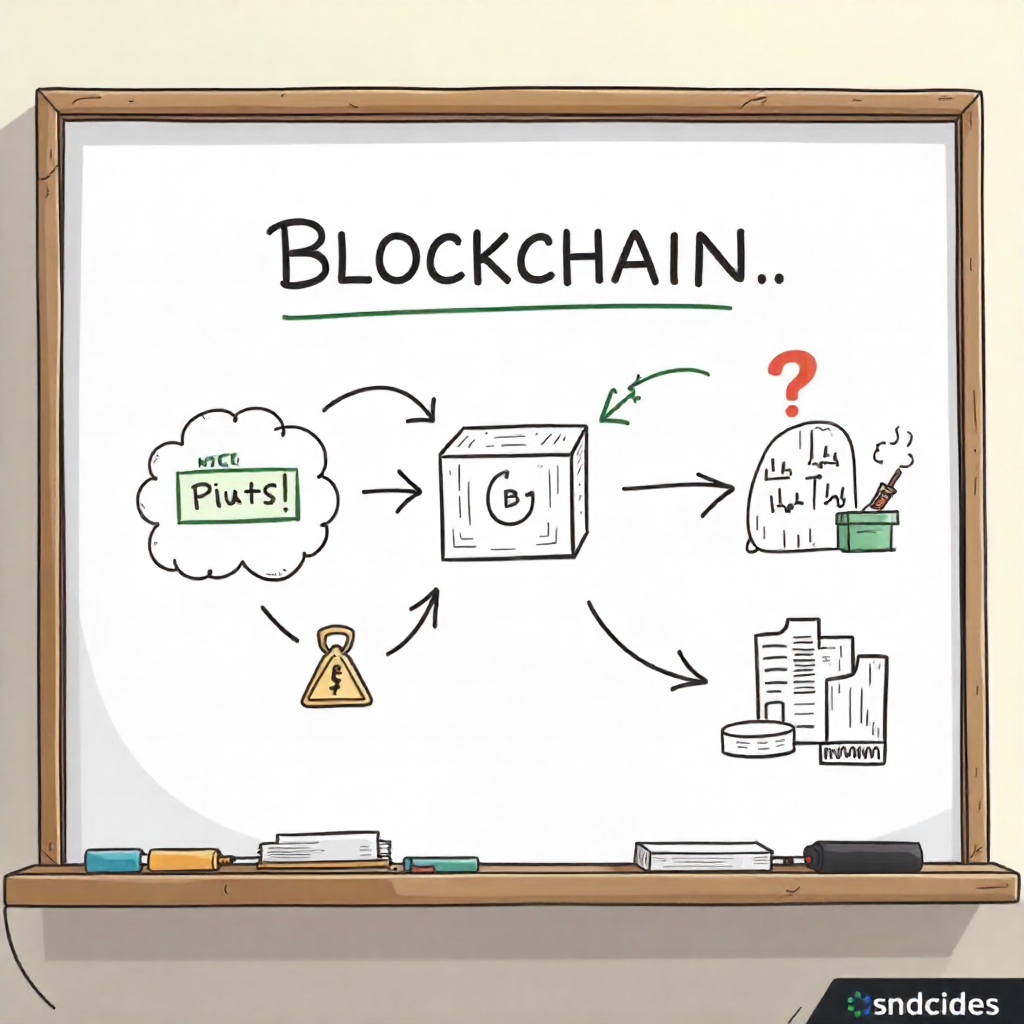The digital world revolves around innovations that cut costs and increase efficiency. One such innovation that stands out is blockchain. This innovation first came to the limelight during the currency revolution with the introduction of Bitcoin. Now, it has applications across many industries such as finance, healthcare, supply chains, and many more. Without a doubt, the blockchain will completely transform how we protect and share data in the future.
This article will discuss the main features of blockchain and its applications in the current digital world.
What is Blockchain?
The simplest definition of blockchain is that it is a digital ledger that is shared across multiple networks, with every transaction recorded Mark Lind. In contrast to conventional databases that are managed by a central authority, every deposit in a blockchain system is done by a participant, known as a node. This has the added benefits of the entire system not being prone to a single point of failure, as well as making it immune to censorship.
The name blockchain stems from the method of storing information data in blocks. Each block has a set list of transactions that must be kept in order and once a new block is added to the chain, the entire sequence becomes immutable. Due to this form of data storage and the mechanisms it is based upon, blockchain can be considered tamper-proof.
How Does Blockchain Function?
1. Transactions
A transaction on the blockchain is the exchange of information or value. For instance, during cryptocurrency transactions, one user might send Bitcoin to another.
Transactions are signed and include: the sender’s information and the recipient’s, the value of currency exchanged, and the transaction’s date and time.
2. Blocks
Once a transaction is made, it is bundled with other transactions and formed in a block. A block typically has the following:
- BLock’s transaction data: All transactions that exist in that block are captured.
- Tiemstamp: Block’s creation date and the time it was made.
- Hash: A unique identifier for the data that lies in the block.
- Previous Block Hash: A point to the hash of the prior block, thus connecting it to the chain.
Linking blocks on the blockchain with cryptographic hashes secures and verifies the information.
3. Nodes
Miner nodes are the computers that confirm transactions and make up the blockchain network. Every node has a copy of the blockchain and are working together to achieve the same state of the ledger throughout the entire network.
Validators: When a transaction is started, the nodes verify the validity of the transaction. If the outcome is positive, it is then incorporated into a new block.
4. Consensus Mechanisms
A consensus mechanism is essential for blockchain to operate in a distributed manner. This is the mechanism in which all participants come to a consensus regarding the validity of transactions before they are incorporated into the blockchain.
Some popular consensus mechanisms include:
- Proof of Work (PoW): To validate transactions and include them in the blockchain, miners need to resolve sophisticated cryptographic puzzles. This has a high computational and energy cost.
- Proof of Stake (PoS): A new block is created by selected validators, in relation to the quantity of cryptocurrency they have staked.
- Delegated Proof of Stake (DPoS): In this setup, participants elect delegates who are then tasked with confirming transactions and maintaining the blockchain in their stead.
5. Blockchain Immutability
It is extremely difficult to change information in a block after it has been added to the blockchain. Each block is connected to the one before it, which means that in order to change any block, you would have to change all the blocks after it. This is why blockchain is extremely secure against fraud and tampering.
Key Features of Blockchain
1. Decentralization
There is no central authority controlling a blockchain network since it works in a decentralized way. Control is distributed among participants (or nodes), which enhances transparency and diminishes the odds of collusion or manipulation.
2. Transparency
All participants in a blockchain network have access to the same data. Transparency means that every transaction is verifiable and auditable by any stakeholders with the requisite access privileges to the blockchain.
3. Security
Data on the blockchain is protected by cryptography. Each transaction is encrypted and connected to a chain of previous transactions. This makes the information on the blockchain very tough to change or hack. Also, because there is no single point of failure in a decentralized blockchain, the network is more secure.
4. Immutability
A transaction cannot be changed or deleted once it is added to the blockchain. This secure the data’s integrity because any subsequent modification would mean a huge effort to change all the blocks in the chain.
5. Smart Contracts
With blockchain technology, smart contracts can also be created. Smart contracts are self-executing contracts where the agreement’s terms are coded. They eliminate the need for intermediaries and increase trust since actions are automated upon the meeting of specified conditions.
Applications of Blockchain Technology
Blockchain technology has more uses than just cryptocurrency. Here are some of the key applications:
1. Cryptocurrencies
The use of blockchain technology in the managing and creating of digital currencies like Bitcoin and Ethereum and others is blockchain’s most notable use. For all transactions that occur in digital currencies, blockchain serves as a secure, decentralized ledger.
2. Supply Chain Management
Blockchain is enabling companies to achieve full visibility and traceability, which is changing supply chain management. It enables companies to monitor the entire journey of products from the point of origin to the end-users, mitigating fraud and enhancing transparency and effectiveness.
3. Healthcare
The management of medical records can be more efficient through blockchain technology by enhancing the security and preventing the alteration of information that is stored. Blockchain technology allows medical practitioners to share information across platforms without violating the privacy of patients and ensures the data’s integrity.
4. Voting Systems
Blockchain has the ability to develop secure and tamper-proof voting systems that are more transparent. Storing votes on the blockchain eliminates the risks of voter fraud and ensures accurate counting which can enhance the credibility of elections.
5. Digital Identity
A blockchain provides a decentralized answer to the issues of managing digital identities. It allows the users to control their data by managing who can access it and how it can be used which can mitigate the possibility of identity fraud.
6. Decentralized Finance (DeFi)
The emergence of DeFi follows the introduction of blockchain technology. Without the need for banks and other financial institutions as middlemen, users of the DeFi system can lend, borrow, as well as earn interest on their crypto assets utilizing smart contracts and other DeFi-specific protocols.
Conclusion
The world today is on the verge of experiencing the transformative potential of Blockchain Technology. It has the potential to revolutionize a plethora of industries such as, finance, supply-chain and even, healthcare. The outstanding benefits of blockchain technology stands to reason, its applicability to a wide range of fields including ones where trust is of paramount importance, can provide a level of transparency and security is ideal
Investing in cryptocurrency, utilizing smart contracts, and exploring the world of decentralized applications, are just a few ways individuals can interact with blockchain and its transformative technologies. Understanding the workings of blockchain technology will soon act as a prerequisite for anyone dealing in the world of digital finance and technology.
FAQs: What Is Blockchain and How Does It Work?
Q1: What is blockchain?
A blockchain is a distributed digital ledger database of transactions stored in a network of computers. The system works on a principle of granting authorized access and is decentralized. Once data is registered, the data is unchangeable, secure, and transparent.
Q2: How does blockchain work?
The recording of transactions in the system is done in sets. These sets are called blocks, and the blocks are arranged to form a chain. For each block of data, its contents undergo validation through various joint agreement systems called consensus mechanisms. The recording of blocks is done in a one-way manner, meaning the contents of each block cannot be altered after the recording.
Q3: What is a consensus mechanism?
A consensus mechanism is the method by which users of a blockchain network validate transactions as they happen, and digitally sign off on them before incorporating them into the blockchain ledger. Two common examples are Proof of Work (PoW) and Proof of Stake (PoS).
Q4: Why is blockchain secure?
A blockchain is secure by design, as it uses a cryptographic method to encrypt transactions. A transaction is stored and linked to an earlier transaction. For a block to be changed, all the blocks that come after it would also need to be changed, which is a huge task.
Q5: Can blockchain be used for anything other than cryptocurrency?
Yes, blockchain glasses can be used in multiple other domains such as in managing the supply chain, in health care, in election voting systems, as a digital identity, and in DeFi.


